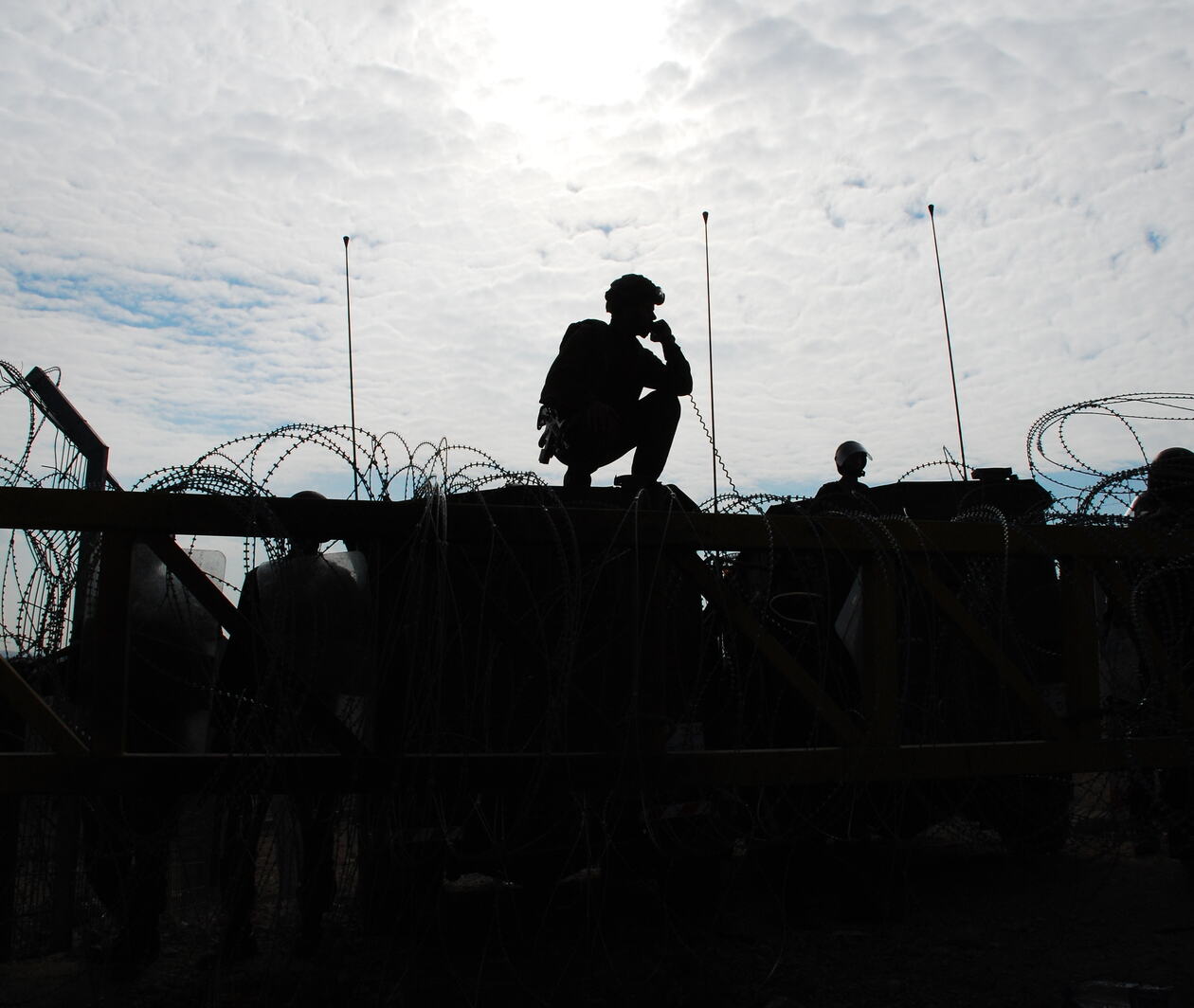This course is part of the Field Ready! Planning for Success in a Conflict Zone ExpertTrack
Tracking Complex Conflicts
Explore and map the parties involved in conflicts, their motivations, and the fault lines between them.

Duration
3 weeksWeekly study
5 hours100% online
How it worksIncluded in an ExpertTrack
Course 1 of 4
Tracking Complex Conflicts
Use conflict mapping to better understand the security environment
Complex conflicts involve a lot of side switching, in-group fragmentation, and coalition rivalries. Unless you understand the parties involved and have a sense of their motivations, these rapid-action changes can feel like walking on quicksand.
On this three-week course presented by Dr Aisha Ahmad, you’ll learn how to identify and map out the actors and interests in a complex conflict zone. Throughout the course, you’ll use Mali as a case study to examine a real-life conflict environment.
Discover the three main parties in a complex conflict zone
You’ll look at the dominant actors involved in conflict theatre: state, nonstate, and international. Focusing on the Malian conflict environment, you’ll distil complex information into useful categories, building three ‘actors’ charts to map the parties and their interests.
Investigate the different drivers of conflict
When mapping conflict, it’s vital to figure out what people want so badly they are willing to kill and die for it. By mapping the overall matrix of identified grievances, you can start to deduce what type of conflict you are dealing with.
This course will guide you through the social and material factors behind complex conflicts, specifically looking at what motivates rebel groups. You’ll delve into the identity, ideology, and economic grievances that can arise and how they overlap, continuing to use Mali as a case study to map these factors.
Where are the fault lines of conflict?
Once you’ve worked through who’s who and what they want, you’ll finish this course by looking at how these actors operate in the wider conflict system. From pro-government alliances to rebel alliances and even jihadist alliances, you’ll dive into the different types of coalition and how this hyper-fragmentation affects your conflict map.
Syllabus
Week 1
Tracking Complex Conflicts
Welcome to the Course
We will begin this learning journey by learning how to assess a threat landscape and then develop a “conflict tracker” to help maintain our situational awareness in the field.
Tracking Complex Conflicts
How do you track complex conflicts? In this activity, we will begin to look at how to build and maintain a “conflict tracker”. We will practice developing this tool using Mali as a case study.
Tracking Nonstate Armed Groups
Let’s think more specifically about the different non-state armed groups (NSAGs) in Mali. In this activity, we will explore how to identify them, and what to include on your tracker.
Tracking International Actors
Identifying the different international actors in the conflict theatre is crucial for your situational awareness. We will continue working with the Mali case to practice this aspect of conflict tracking.
Weekly wrap-up
This week we learned how to build a conflict tracker to help improve our situational awareness of a conflict zone, and developed our own versions of this tool to understand the Mali case. Let’s recap what we’ve covered.
Week 2
Tracking Group Grievances
Welcome
This week we'll explore some of the dominant drivers of violent conflict, as established in the literature on civil wars. We’ll look at the role of identity, ideology, and material factors in motivated armed groups to fight.
Identity
Continuing with our Mali case study, we investigate why and how conflicts occur along ethnic, tribal, or other kin lines. We also explore how identity affects the threat landscape in these types of conflict zones.
Ideology
Continuing with our Mali case study, in this activity we explore the difference between identity and ideology, and practice categorizing NSAGs according to ideological orientation.
Material Factors
Continuing with our Mali case study, in this activity we explore some of the underlying material factors behind violent conflict, and assess their role in motivating identity-based or ideological armed groups to take up arms.
Weekly wrap-up
This week we have learnt about the drivers of civil conflict. This final activity will bring everything we have explored together.
Week 3
Inter- and Intra-Group Conflict Dynamics
Welcome
This week we will explore some dynamic interactions among NSAGs, such as building coalitions, switching sides, intra-group splits, and group mergers. We will incorporate these insights into our Mali conflict trackers.
Mapping meta-level divisions: alliances and coalitions
In this activity, we will learn why NSAGs form coalitions. Continuing with our Mali case study, we will work on determining which NSAGs in the theatre are members of coalitions, and then input these data in our conflict trackers.
Intra-group rivalries and in-fighting
In this activity, we will explore some of the ways that both coalitions and NSAGs can struggle with internal divisions, and examine why this can lead to in-fighting, fragmentation, and side-switching.
Your Mali Conflict Tracker
In this task, we would like you to share your Mali conflict tracker, and then respond to the questions about how you designed and maintained your tracker to enrich your understanding of the conflict.
Wrap-up
This week we covered how NSAGs behave in a conflict zone. Now it is time to wrap-up and consolidate everything we have learnt in this course.
Prove you're job ready
Highlight the new, job-relevant skills you’ve gained and supplement existing qualifications with a hard-earned, industry-specific digital certificate – plus one for every course within your ExpertTrack.
- Learn the latest in your chosen industry or subject.
- Complete each course and pass assessments.
- Receive certificates validated by the educating organisation.
- Impress employers with learning outcomes you can add to your CV.
- Make your career dreams a reality.
Download a PDF
Learning on this course
On every step of the course you can meet other learners, share your ideas and join in with active discussions in the comments.
What will you achieve?
By the end of the course, you‘ll be able to...
- Develop a user-friendly tracking tool to monitor armed actors and their interests in a complex conflict zone.
- Extract and organize relevant data about armed actors, such as group composition, geographic reach, and primary motivations.
- Investigate the intra-and inter-group fault lines of conflict among armed actors, as well as their alliances and affiliations.
Who is the course for?
This course is designed for anyone working or volunteering for an organisation engaged in a conflict-affected environment.
It will also be useful if you’re studying a related subject such as political science, public policy, or international business studies.
Who will you learn with?
I'm an Associate Professor of Political Science at the University of Toronto, specializing in International Security. I research civil war economies and jihadist insurgencies around the world.
Start learning today - free 7-day trial
After your free trial you can:
- Pay $39 per month to keep learning online
- Have complete control over your subscription; you can cancel any time
- Work at your own pace and set your own deadlines at every stage
- Only pay while you’re learning; the subscription will cancel automatically when you finish
- Complete online assessments to test your knowledge and prove your skills
- Earn digital course certificates and a final award that you can share online, with potential employers, and your professional network
- Keep access to the content of courses you complete even after your subscription ends
Learning on FutureLearn
Your learning, your rules
- Courses are split into weeks, activities, and steps to help you keep track of your learning
- Learn through a mix of bite-sized videos, long- and short-form articles, audio, and practical activities
- Stay motivated by using the Progress page to keep track of your step completion and assessment scores
Join a global classroom
- Experience the power of social learning, and get inspired by an international network of learners
- Share ideas with your peers and course educators on every step of the course
- Join the conversation by reading, @ing, liking, bookmarking, and replying to comments from others
Map your progress
- As you work through the course, use notifications and the Progress page to guide your learning
- Whenever you’re ready, mark each step as complete, you’re in control
- Complete 90% of course steps and all of the assessments to earn your certificate
Want to know more about learning on FutureLearn? Using FutureLearn

